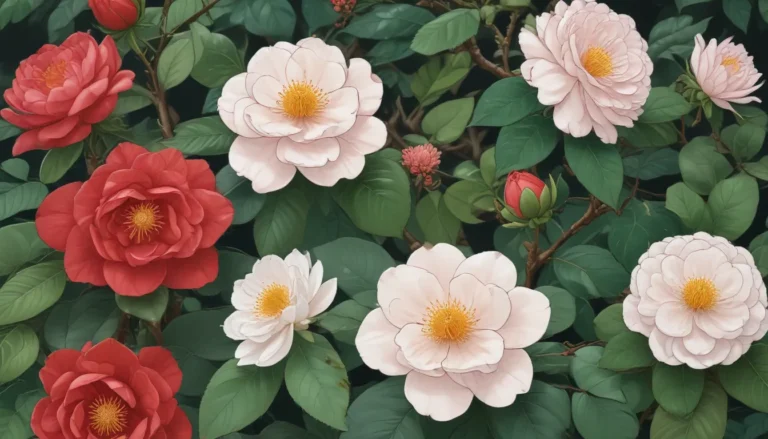A Comprehensive Guide to Growing Terrestrial Orchids

Orchids are fascinating plants that have captured the hearts of many gardeners and indoor plant enthusiasts. When we think of orchids, we often picture the beautiful epiphytic varieties that cling to trees and branches. However, there is another category of orchids that we often overlook: terrestrial orchids. These special plants have unique care requirements and can provide a diverse range of options for both indoor and outdoor cultivation.
What Are Terrestrial Orchids?
Terrestrial orchids are a distinct group of plants that grow in soil with their roots anchored in the earth. Unlike epiphytic orchids, which attach themselves to trees, terrestrial orchids rely on the nutrients and moisture present in the soil. While epiphytic orchids are more common in cultivation, there are over 200 species of terrestrial orchids that offer a wide variety of colors, sizes, and growing habits.
In the wild, terrestrial orchids can be found across the globe, from the Arctic Circle to the southern tip of Patagonia. These plants have adapted to diverse environments, including deserts, tundras, and wooded forests, making them a versatile and resilient addition to any garden or home.
Cultivation and History of Terrestrial Orchids
Orchids have a long and rich history in human culture. Certain species, such as the Cypripedium genus, have been used for medicinal purposes for thousands of years by native North American peoples and in traditional Chinese medicine. Over time, orchids have become valuable commercially, with many species prized for their ornamental beauty.
In the 18th and 19th centuries, explorers and botanists introduced many orchid species to Europe, sparking a craze for these exotic plants. As interest in orchids grew, new species were discovered and cultivated, leading to the development of hybrids and cultivars that are still enjoyed today.
From the Calanthe orchids described by George Rumph to the Phaius tankervilliae brought to England by James Fothergill, terrestrial orchids have a rich botanical history that continues to unfold. Today, researchers and enthusiasts are still discovering new species, such as the Eulophia graminea identified in Puerto Rico in 2018.
While terrestrial orchids have become popular for their beauty and exotic appeal, many species are endangered due to poaching and habitat loss. Conservation efforts are ongoing to protect these valuable plants and their natural habitats.
Terrestrial Orchid Propagation
Propagating terrestrial orchids can be challenging, but with the right knowledge and techniques, it is possible to multiply these unique plants. One of the most common methods of propagation is division, where an existing plant is separated into smaller sections for replanting.
To divide a terrestrial orchid, carefully remove the plant from its container or dig it up from the ground. Gently separate the roots and pseudobulbs, cutting them into sections with a clean pair of pruners. Replant the divisions in new pots or garden beds, following the specific requirements of the species.
Transplanting is another propagation method that involves moving a potted orchid to a new container or outdoor location. By providing the right soil, light, and water conditions, you can help your terrestrial orchids thrive and multiply.
How to Grow Terrestrial Orchids
Growing terrestrial orchids requires a good understanding of the specific needs of each species. While most terrestrial orchids prefer moist, well-draining soil and dappled or indirect light, there are variations in their requirements based on their natural habitats. For example, some species thrive in sandy soils with minimal water, while others prefer loamy, nutrient-rich soil with regular moisture.
To ensure the health and vitality of your terrestrial orchids, it is essential to provide the right growing conditions, including proper watering, light exposure, and soil quality. By following best practices for cultivation and maintenance, you can enjoy the beauty of these unique plants year-round.
Growing Tips for Terrestrial Orchids
- Understand the specific needs of each species.
- Provide consistent moisture and well-draining soil.
- Ensure adequate light exposure, according to the plant’s requirements.
Maintenance of Terrestrial Orchids
To keep your terrestrial orchids healthy and blooming, regular maintenance is essential. Pruning back spent flower stalks, removing dead or damaged foliage, and repotting as needed are all important tasks to promote new growth and flowering. By following a regular maintenance schedule, you can help your orchids thrive for years to come.
Terrestrial Orchid Species to Select
When choosing terrestrial orchids for your garden or home, consider the specific requirements of each species and how they will fit into your environment. Some popular options for houseplant cultivation include:
- Bamboo Orchids (Arundina spp.)
- Corduroy Orchids (Eulophia spp.)
- Slipper Orchids (Cypripedium spp.)
- Jewel Orchids (Ludisia spp.)
- Nun’s Orchids (Phaius tankervilliae)
- Purple Orchids (Spathoglottis spp.)
- Urn Orchids (Bletilla species)
Each of these orchid species offers unique colors, sizes, and growing habits, making them a versatile and attractive addition to any indoor or outdoor space.
Managing Pests and Diseases
While terrestrial orchids are generally resilient to pests, they can be susceptible to fungal diseases and viruses. Common pests such as aphids, mealybugs, and spider mites can be controlled with regular monitoring and appropriate interventions. Fungal diseases like leaf spots and rot can be managed with proper cultural practices and the use of fungicides or bactericides as needed.
By staying vigilant and taking proactive measures to prevent and address pest and disease issues, you can help your terrestrial orchids stay healthy and vibrant throughout the growing season.
Best Uses for Terrestrial Orchids
Terrestrial orchids are versatile plants that can be used in a variety of garden and indoor settings. From borders and rock gardens to containers and shaded areas, these plants can thrive in diverse environments and add beauty to any space. Whether grown as houseplants or outdoor ornamentals, terrestrial orchids offer a wide range of options for creative and inspired gardening.
Quick Reference Growing Guide
- Plant Type: Terrestrial evergreen or deciduous flower
- Flower/Foliage Color: Wide range of colors
- Native to: All regions of the globe except Antarctica
- Hardiness (USDA Zones): 2-12
- Maintenance: Moderate
- Bloom Time: Summer, spring, fall, winter, depending on species
By following the information and suggestions provided in this comprehensive guide, you can grow and enjoy the beauty of terrestrial orchids in your own garden or home. With the right care and attention, these unique plants will reward you with their stunning flowers and vibrant growth. So, why not take your gardening to new levels with the diverse and fascinating world of terrestrial orchids? Let the beauty of these plants inspire and enchant you as you explore the wonders of orchid cultivation.





